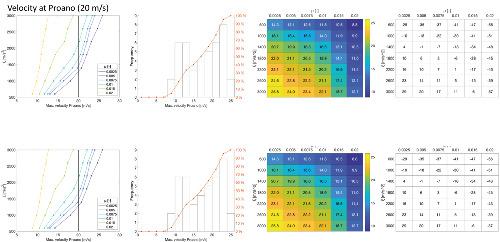当前位置:
X-MOL 学术
›
Earth Surf.Process. Land.
›
论文详情
Our official English website, www.x-mol.net, welcomes your
feedback! (Note: you will need to create a separate account there.)
Modelling future lahars controlled by different volcanic eruption scenarios at Cotopaxi (Ecuador) calibrated with the massively destructive 1877 lahar
Earth Surface Processes and Landforms ( IF 2.8 ) Pub Date : 2020-12-22 , DOI: 10.1002/esp.5056 Theresa Frimberger 1 , Daniel Andrade 2 , Samuel Weber 1 , Michael Krautblatter 1
Earth Surface Processes and Landforms ( IF 2.8 ) Pub Date : 2020-12-22 , DOI: 10.1002/esp.5056 Theresa Frimberger 1 , Daniel Andrade 2 , Samuel Weber 1 , Michael Krautblatter 1
Affiliation

|
Lahars are among the most hazardous mass flow processes on earth and have caused up to 23 000 casualties in single events in the recent past. The Cotopaxi volcano, 60 km southeast of Quito, has a well‐documented history of massively destructive lahars and is a hotspot for future lahars due to (i) its ~10 km2 glacier cap, (ii) its 117–147‐year return period of (Sub)‐Plinian eruptions, and (iii) the densely populated potential inundation zones (300 000 inhabitants). Previous mechanical lahar models often do not (i) capture the steep initial lahar trajectory, (ii) reproduce multiple flow paths including bifurcation and confluence, and (iii) generate appropriate key parameters like flow speed and pressure at the base as a measure of erosion capacity. Here, we back‐calculate the well‐documented 1877 lahar using the RAMMS debris flow model with an implemented entrainment algorithm, covering the entire lahar path from the volcano edifice to an extent of ~70 km from the source. To evaluate the sensitivity and to constrain the model input range, we systematically explore input parameter values, especially the Voellmy–Salm friction coefficients μ and ξ. Objective selection of the most likely parameter combinations enables a realistic and robust lahar hazard representation. Detailed historic records for flow height, flow velocity, peak discharge, travel time and inundation limits match best with a very low Coulomb‐type friction μ (0.0025–0.005) and a high turbulent friction ξ (1000–1400 m/s2). Finally, we apply the calibrated model to future eruption scenarios (Volcanic Explosivity Index = 2–3, 3–4, >4) at Cotopaxi and accordingly scaled lahars. For the first time, we anticipate a potential volume growth of 50–400% due to lahar erosivity on steep volcano flanks. Here we develop a generic Voellmy–Salm approach across different scales of high‐magnitude lahars and show how it can be used to anticipate future syneruptive lahars.
中文翻译:

对厄瓜多尔科托帕希(Cotopaxi)受不同火山喷发情景控制的未来Lahar建模,并使用1877年大规模毁灭性Lahar进行了校准
Lahars是地球上最危险的质量流量过程之一,在最近的一次事件中已造成多达23 000人伤亡。位于基多东南60公里处的科托帕希火山具有充分记录的大规模破坏性拉哈尔历史,是未来拉哈尔的热点,这是由于(i)约10 km 2(ii)(亚)-Plinian喷发的117-147年恢复期,以及(iii)人口稠密的潜在淹没区(30万居民)。以前的机械拉哈模型通常不(i)捕获陡峭的初始拉哈轨迹,(ii)重现包括分叉和汇合的多条流路,并且(iii)在底部生成适当的关键参数(如流速和压力)作为腐蚀的量度容量。在这里,我们使用RAMMS泥石流模型和已实施的夹带算法,对有据可查的1877年拉哈尔进行反算,该算法涵盖了从火山口到源头约70公里的整个拉哈尔路径。为了评估灵敏度并限制模型输入范围,我们系统地探索了输入参数值,尤其是Voellmy-Salm摩擦系数μ和ξ。客观选择最可能的参数组合可以实现逼真的鲁棒危害表示。流量高度,流速,峰值流量,行进时间和淹没极限的详细历史记录与非常低的库仑摩擦系数μ(0.0025–0.005)和湍流摩擦系数ξ(1000–1400 m / s 2)最为匹配。)。最后,我们将校准的模型应用于科托帕克西(Cotopaxi)的未来喷发情景(火山爆发指数= 2-3、3-4,> 4),并相应地按比例缩放了拉哈尔。我们首次预计,由于陡峭火山侧面的拉哈侵蚀性,其潜在的体积增长为50-400%。在这里,我们针对不同规模的高强度拉哈尔开发了通用的Voellmy-Salm方法,并展示了如何将其用于预测未来的协同拉哈尔。
更新日期:2020-12-22
中文翻译:

对厄瓜多尔科托帕希(Cotopaxi)受不同火山喷发情景控制的未来Lahar建模,并使用1877年大规模毁灭性Lahar进行了校准
Lahars是地球上最危险的质量流量过程之一,在最近的一次事件中已造成多达23 000人伤亡。位于基多东南60公里处的科托帕希火山具有充分记录的大规模破坏性拉哈尔历史,是未来拉哈尔的热点,这是由于(i)约10 km 2(ii)(亚)-Plinian喷发的117-147年恢复期,以及(iii)人口稠密的潜在淹没区(30万居民)。以前的机械拉哈模型通常不(i)捕获陡峭的初始拉哈轨迹,(ii)重现包括分叉和汇合的多条流路,并且(iii)在底部生成适当的关键参数(如流速和压力)作为腐蚀的量度容量。在这里,我们使用RAMMS泥石流模型和已实施的夹带算法,对有据可查的1877年拉哈尔进行反算,该算法涵盖了从火山口到源头约70公里的整个拉哈尔路径。为了评估灵敏度并限制模型输入范围,我们系统地探索了输入参数值,尤其是Voellmy-Salm摩擦系数μ和ξ。客观选择最可能的参数组合可以实现逼真的鲁棒危害表示。流量高度,流速,峰值流量,行进时间和淹没极限的详细历史记录与非常低的库仑摩擦系数μ(0.0025–0.005)和湍流摩擦系数ξ(1000–1400 m / s 2)最为匹配。)。最后,我们将校准的模型应用于科托帕克西(Cotopaxi)的未来喷发情景(火山爆发指数= 2-3、3-4,> 4),并相应地按比例缩放了拉哈尔。我们首次预计,由于陡峭火山侧面的拉哈侵蚀性,其潜在的体积增长为50-400%。在这里,我们针对不同规模的高强度拉哈尔开发了通用的Voellmy-Salm方法,并展示了如何将其用于预测未来的协同拉哈尔。









































 京公网安备 11010802027423号
京公网安备 11010802027423号